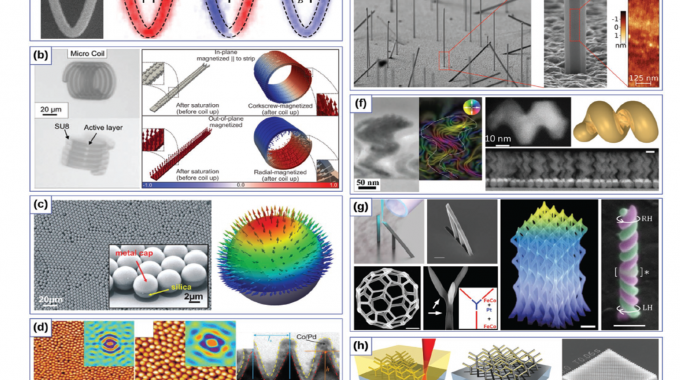
New Dimension in Magnetism and Superconductivity: 3D and Curvilinear Nanoarchitectures
Authors: Denys Makarov, Oleksii M. Volkov, Attila Kákay, Oleksandr V. Pylypovskyi, Barbora Budinská, and Oleksandr V. Dobrovolskiy
Advanced Materials 2021, 2101758
Abstract: Traditionally, the primary field, where curvature has been at the heart of research, is the theory of general relativity. In recent studies, however, the impact of curvilinear geometry enters various disciplines, ranging from solid-state physics over soft-matter physics, chemistry, and biology to mathematics, giving rise to a plethora of emerging domains such as curvilinear nematics, curvilinear studies of cell biology, curvilinear semiconductors, superfluidity, optics, 2D van der Waals materials, plasmonics, magnetism, and superconductivity. Here, the state of the art is summarized and prospects for future research in curvilinear solid-state systems exhibiting such fundamental cooperative phenomena as ferromagnetism, antiferromagnetism, and superconductivity are outlined. Highlighting the recent developments and current challenges in theory, fabrication, and characterization of curvilinear micro- and nanostructures, special attention is paid to perspective research directions entailing new physics and to their strong application potential. Overall, the perspective is aimed at crossing the boundaries between the magnetism and superconductivity communities and drawing attention to the conceptual aspects of how extension of structures into the third dimension and curvilinear geometry can modify existing and aid launching novel functionalities. In addition, the perspective should stimulate the development and dissemination of research and development oriented techniques to facilitate rapid transitions from laboratory demonstrations to industry-ready prototypes and eventual products.
